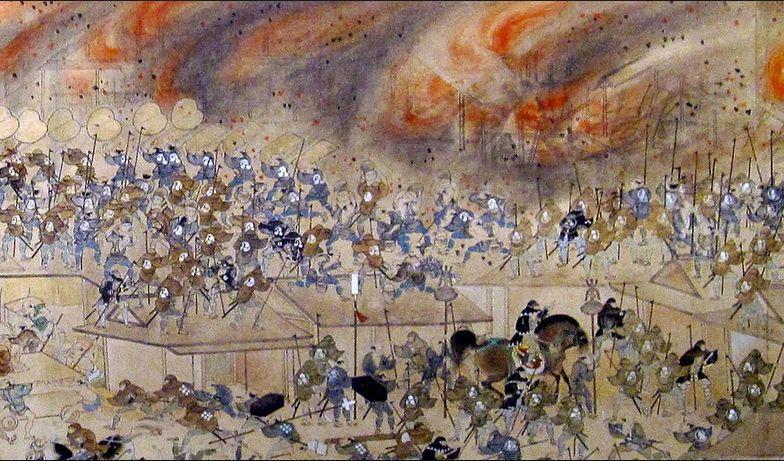I introduced the Holland House last time, but there are still letters between Capitan (Director Dutch trading post) Blom Holtz (Director of the trading house in the late Edo period) and his daughters. Let's imagine the inside of the Holland House and the audience with the generals. (A mystery novel titled "Nagasakiya's Daughter" is published. If you are interested, why don't you read it?
As a medicinal wholesaler, Nagasakiya Genemon owned a vast land next to it, with Tang Ginseng (a drug store centered on Korean carrots) in the corner area of Chuo-dori. There was the Holland House behind the mansion of Nagasakiya, but it is probable that the entrance was on the Shindo side of Honishicho 3-chome. At present, Honishicho Shindo is named "Time Bell Street". This is because there was the oldest "Time Bell" in Edo next to the Holland House.
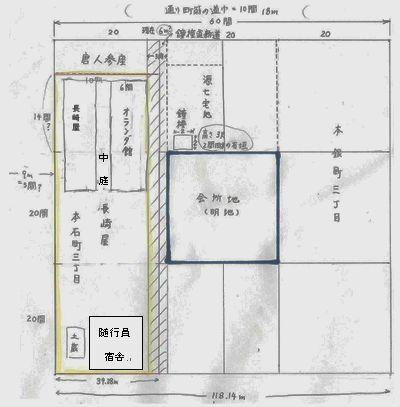
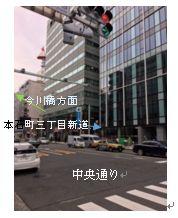
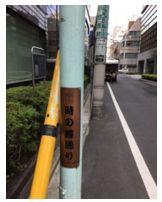
The site of Nagasakiya is large, and it is probable that there was a dormitory for non-Netherlands, a storehouse for storing gifts, and a stable for horses on the premises. The size of the site is considered to be more than a thousand tsubo (3,300m2).
There is a door just on the left side of the entrance on the first floor, and you can open it and go up to the second floor. It may have been necessary to obtain permission from a security guard to go up to the second floor.


There is a statement that the smoke of the kiln flowed into the Capitan office on the second floor and struggled, so the kitchen is placed on the left side of the first floor, the dining room on the right, and the people who came to the interview on the second floor It is expected that the waiting room was on the right. The door of the kitchen where the kiln is located leads to the residence of Nagasakiya, which may have been the window for interaction with the people of Nagasakiya. You may have provided meals cooked on the Nagasakiya side. Did the Dutch eat sushi and tempura too?
In the toilets and bathrooms on the second floor of the Holland House, h "Omaru" and urine bottles were used, and near the end of the Tokugawa period, things like toilet chairs and stool toilets were used.
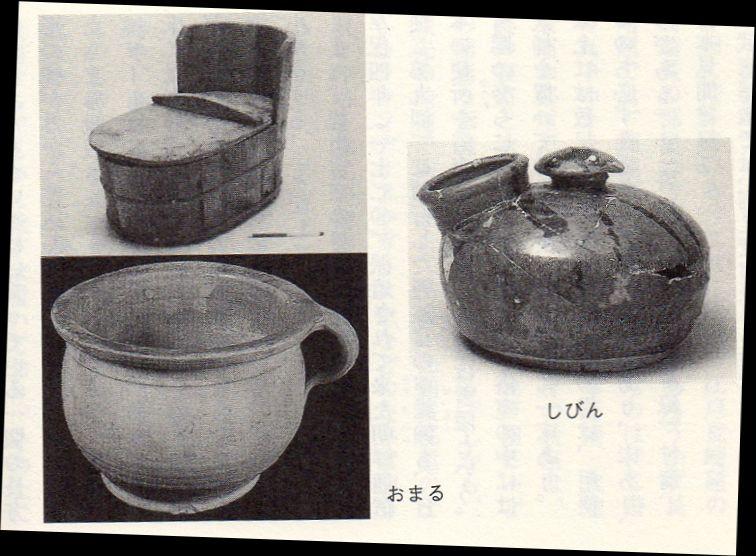
Dutch inn (kan?) It began in the Kanei era (1624-1644), and ended around 1850, but the total number of Sanfu came to 166 times. In the age of Iemitsu, I visited the prefecture every year, but in the latter half, it changed once every four years.
Nagasakiya spends a very busy day 2-3 days before the Capitan's party arrives. The second floor will be repaired and will be inspected by an official of Nagasaki magistrate's office. From the eve of arrival, about two general contractors and two concentrics from the town magistrate's office will be packed in Nagasakiya for security. Did these people stay in the security room on the first floor of the Holland House?
There is a double guardhouse at the gate of the inn (refers to the Holland House), and the security is very strict because there is a sentence saying that it is constantly patroling around it and not allowing passers-by to stop." It is expected to have been. As a ukiyo-e of Hokusai, the appearance of Capitans and Edo townspeople interacting through the window is depicted, and it is still displayed as a signboard at the entrance of Shin-Nihonbashi Station, but this is considered to be the adaptation of Hokusai. In the era of isolation, it is very unlikely that there was a window on the first floor of the Holland House.
When the capitan group was staying, the curtain of the Dutch East India Company (Vereenigde Oostindische Compagnie = VOC) was displayed at the main entrance of Nagasakiya (Honishicho 3-chome Road). I don't know which one of the curtains below. Since the Edo shogunate had set a policy of isolation, it was moving in front of the establishment that it was doing business with a private company called the Dutch East India Company.
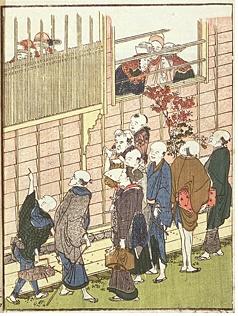

The capitan costume was as shown in the figure below, so it must have been rare and interesting for the people of Edo.

The structure of the Dutch mission is as follows.
l Four Dutchmen, including sui staff such as capitan, secretary and doctor.
l In addition, magistrate's office inspectors, attendants, clerks, cooks, attendants of gifts, etc.
It is said that there are about 60 people in total. This number of people travel from Nagasaki to Edo, so it's spectacular.

Since everyone could not be accommodated in the Holland House mansion, it seems that some of them were housed in the attendant dormitory on the premises and the rest was housed in a nearby Hatago. During his stay in Capitan, a lot of money fell into the Nihonbashi area and it was very busy.
The arrangement of audiences with the general (11th Shogun Ienari Tokugawa) at the time of 1822 (1823) is as follows.
l Audience with the general: April 6
l Uno's time (6:00 a.m.) Depart from Nagasakiya
l Get off the palanquin and enter the castle
l Drink tea at the Hundred People's Office
l Waiting
l Arrived at the Palace
Audience between Masayuki Nagasaki and Capitan of Edo in Japan
After the audience, they return to Nagasakiya around the old and young people of the Shogunate, side servants, shrines and shrines, and Kita Minamimachi magistrate's residences, but this does not end. Daimyo who loves Dutch studies, medical officers of the Shogunate, astronomers, flagship books, various daimyo, private Dutch scholars, etc. are waiting at the Arandakan, so we interview them and finally end the long ~~~~~~~~~~~~~~~~~~~~~~~~~~~~ Did you feel relieved after this and drink liqueur?
Reference:
Hayakawa Bunko, daughter of the Dutch inn
Seiichi Kiuchi: The first bell story of Edo (Ryutsu Keizai University Press)
Seiichi Kiuchi: Nagasakiya Monogatari, a Dutch lodging house in Edo (Ryutsu Keizai University Press)
Kazuo Katagiri: Dutchman in Edo (Nakakou Shinsho)
Kazuo Katagiri: Still, was Edo a isolation (Kikkawa Hirobunkan)?
Chuo-ku, Tokyo Board of Education: Chuo-ku History Chart (Nihonbashi edition)
